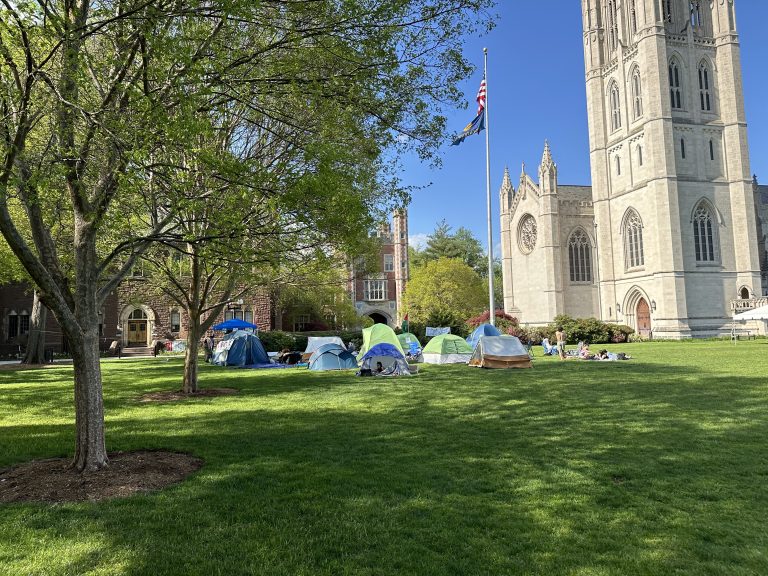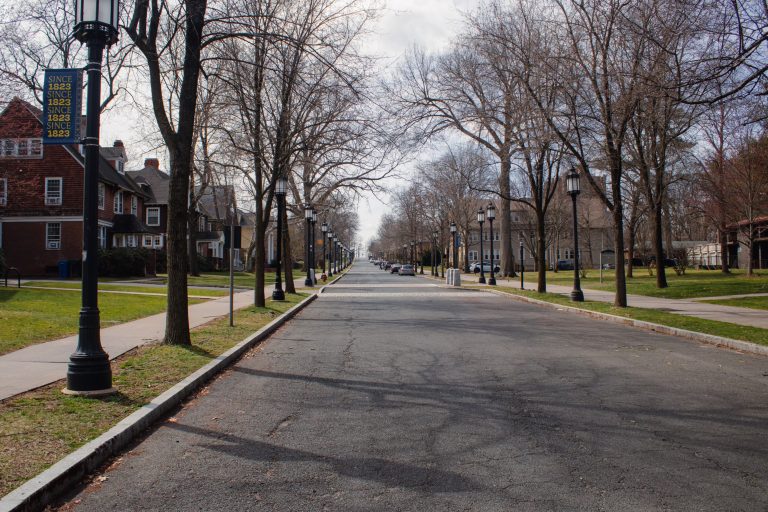Iqra Athar ’26
News Editor
Trinity College marked the beginning of its 200th academic year by welcoming the Class of 2027. During the Convocation and Matriculation Ceremony, which took place on Aug. 27, President Joanne Berger-Sweeney urged the new students to seize the opportunities that their Trinity journeys offer, emphasizing the profound impact of a liberal arts education.
“I ask that each of you make one commitment to the future that has two elements: a hope for a better tomorrow and an action you will take,” said President Berger-Sweeney during the ceremony as she welcomed the new class. This ceremony marked the commencement of the journey for 592 students selected from a pool of 6,510 applications.
In a recent conversation with Dean of Admissions and Financial Aid Matthew S. Hyde, the Tripod gained valuable insights into the enrollment statistics and demographics of Trinity College’s Class of 2027. This incoming class experienced a significant surge in applications, showcasing its diverse backgrounds and dynamic abilities.
Hyde shared that Trinity College received an impressive 6,510 first-year applications, marking a five-year high. The overall acceptance rate for the Class of 2027 stood at 33%, underscoring the College’s statements on unwavering commitment to selectivity and academic excellence. Out of this remarkable applicant pool, 592 students successfully matriculated as Bantams in the College›s Bicentennial Class. Furthermore, Hyde revealed that 274 students secured admission through Early Decision (ED1 & ED2) applications.
Among domestic students, 23% identify as students of color, contributing to an overall rate of 33% at the College. Thirteen percent of the class is comprised of foreign nationals hailing from 46 different countries, showcasing Trinity’s international reach. Moreover, 16% of the students are first-generation college attendees, supporting the College’s claims of dedication to accessibility and inclusivity. Students from 36 U.S. states are joining Trinity College, with 273 students calling New England home.
Trinity College implemented several initiatives and strategies to ensure an inclusive and diverse new class. These efforts included increased investments in diversity-focused recruitment and yield events, the College’s active participation in the Global Student Haven Initiative (a consortium of peer institutions dedicated to more deliberately recruiting, admitting, enrolling and supporting students from displaced populations), and a more strategic and intentional approach to creating orientation groups that promote diversity and enrich student experiences.
In a commitment to make Trinity College accessible to all, the Enrollment Team allocated over $20 million in financial aid resources benefiting just over 60% of the Class of 2027. The majority of these aid dollars were awarded as need-based financial aid packages with a notable reduction and even elimination of loans for families with annual incomes below $100,000.
Trinity College’s test-optional policy remains unchanged, providing prospective students with flexibility in the admissions process. The academic interests and intended majors of the incoming Class of 2027 remain consistent with previous classes, reflecting a diverse range of academic pursuits.
Hyde noted that Trinity’s Class of 2027 still maintains a diverse international presence with 13% of the class being international students. This marks a decrease in the number of international students compared to the previous year, which had the largest proportion of international students in Trinity’s history.
Hyde also discussed changes in the national college admissions landscape — specifically increased competition as more students apply to multiple institutions resulting in crowded applicant pools. This heightened competition has led to more uncertainty for prospective students seeking admission to selective colleges and universities. On the flip side, less-resourced and less-selective colleges in smaller and often rural markets are facing notable enrollment challenges. This sentiment is widely shared by colleges as noted by IvyWise, a global educational consulting company, which reports on the influx of applicants and how it could result in more students being placed on waitlists as colleges grapple with the challenge of managing their enrollment numbers effectively.
Overall, Hyde expressed high hopes for the Class of 2027, emphasizing the importance of meaningful engagement and learning among the students. He aspires for them to take full advantage of Trinity’s offerings and to be inclusive and action-oriented in their endeavors. Hyde expressed that he “hope[s] Trinity ’27 roots itself at the College over the next few months with a collective energy to engage meaningfully with one another and recognize how much they have to learn when they do – certainly when/where commonalities and interests align, but also when/where differences exist.”
As Trinity College embarks on its 200th academic year, the Class of 2027 brings promise, diversity and a shared commitment to the values of a liberal arts education. The College eagerly anticipates witnessing their journey and contributions to the Trinity community in the years to come.










+ There are no comments
Add yours